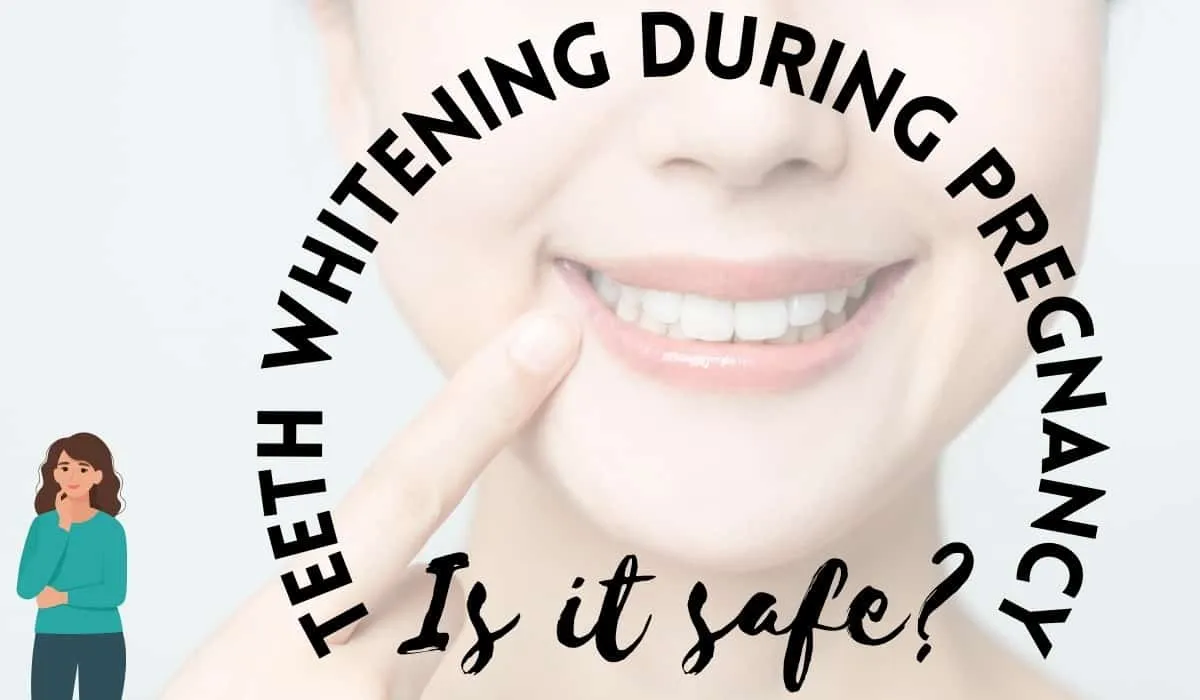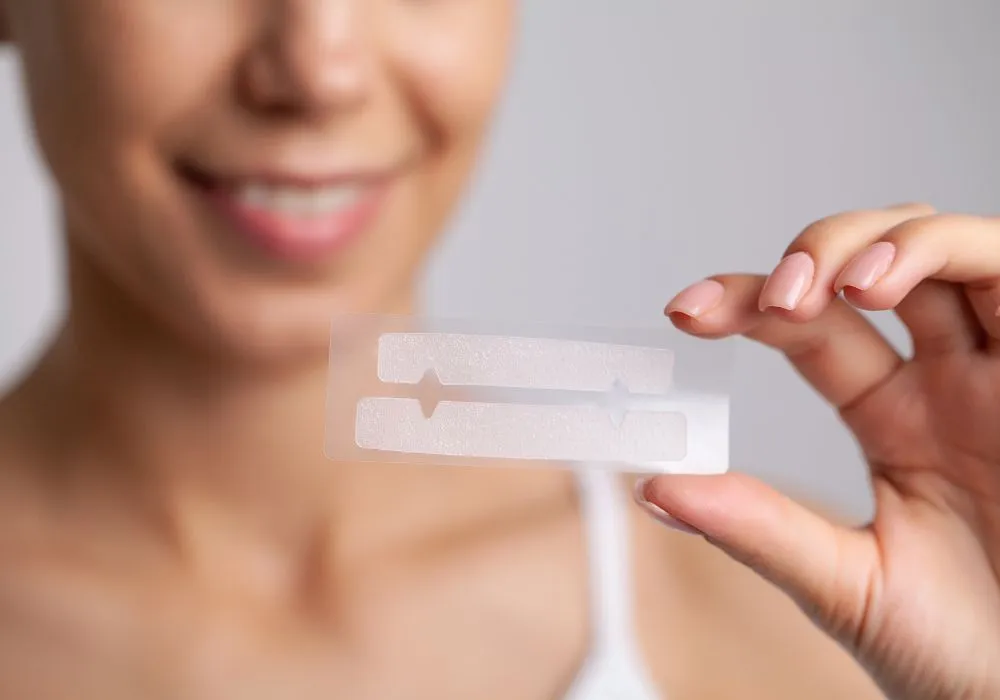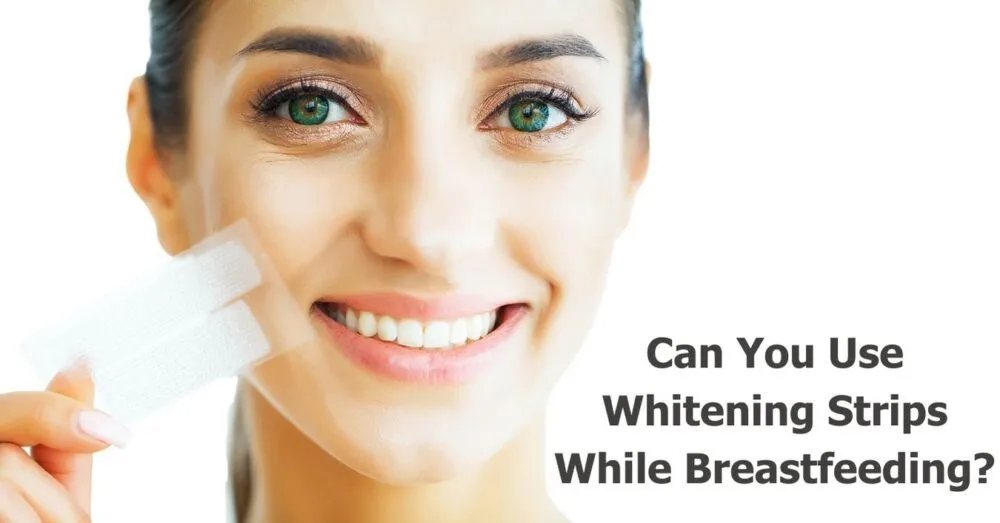What are Whitening Strips?
Whitening strips are a popular cosmetic dental product designed to lighten the shade of your teeth. They typically consist of thin, flexible plastic strips coated with a peroxide-based whitening agent. These strips are applied directly to the teeth, adhering to the surface and allowing the whitening solution to come into contact with the enamel. Over time, the active ingredients in the strips penetrate the enamel, breaking down stains and discolorations. This leads to a brighter, more aesthetically pleasing smile. The convenience and ease of use make whitening strips an attractive option for those seeking a quick and affordable teeth-whitening solution.
How Whitening Strips Work
The effectiveness of whitening strips lies in their active ingredients, primarily hydrogen peroxide or carbamide peroxide. When the strip is applied, these chemicals react with the stains on the tooth enamel. Hydrogen peroxide acts as an oxidizing agent, breaking down the stain molecules into smaller, less visible particles. This process, known as oxidation, effectively lightens the overall color of the teeth. The concentration of peroxide varies depending on the product, with higher concentrations potentially yielding faster results, but also increasing the risk of sensitivity. The duration of application and the frequency of use also influence the outcome, with most strips requiring daily use over a period of several weeks to achieve the desired level of whitening.
Understanding the Ingredients in Whitening Strips

The primary active ingredient in most whitening strips is hydrogen peroxide or carbamide peroxide. Hydrogen peroxide is a strong oxidizing agent that effectively bleaches the teeth. Carbamide peroxide breaks down into hydrogen peroxide and urea, providing a slower-release action. Other ingredients include binding agents that help the strip adhere to the teeth, such as PVP (polyvinylpyrrolidone) and acrylates. These ingredients ensure the whitening agent stays in contact with the tooth surface. Flavoring agents, like peppermint or spearmint, are also added to improve the taste and user experience. Additionally, some strips contain glycerin, which helps to maintain the strip’s flexibility and moisture, ensuring it adheres properly to the teeth. Always check the ingredient list for potential allergens or irritants.
Hydrogen Peroxide and Pregnancy
The safety of hydrogen peroxide during pregnancy is a subject of some debate, particularly concerning its use in products that may be ingested or absorbed. While small amounts of hydrogen peroxide are generally considered safe, there is limited research on the potential effects of higher concentrations, or repeated use, on fetal development. The primary concern revolves around the possibility of the substance being absorbed into the bloodstream and subsequently affecting the developing fetus. Given the inherent uncertainties, healthcare providers often recommend caution and advise pregnant women to avoid products containing hydrogen peroxide, especially in high concentrations. It is crucial to consult with a healthcare professional before using any teeth-whitening products during pregnancy.
The Role of Hydrogen Peroxide in Whitening
Hydrogen peroxide is the workhorse of teeth whitening. It penetrates the enamel and dentin, breaking down the staining compounds that darken teeth. The higher the concentration, the quicker the whitening effect, but also the greater the potential for side effects such as tooth sensitivity and gum irritation. The reaction between hydrogen peroxide and the stains is a chemical process that lightens the overall appearance of the teeth, resulting in a brighter smile. The concentration varies in over-the-counter strips, ranging from lower strengths for gentler whitening to higher strengths available in professional treatments. It is essential to follow the instructions carefully to minimize any risks.
Potential Risks of Hydrogen Peroxide

The use of hydrogen peroxide, especially in high concentrations, can pose certain risks. The most common side effect is tooth sensitivity, which may manifest as a sharp, temporary pain when consuming hot or cold foods and drinks. Gum irritation and inflammation are also possible, especially if the whitening strips come into contact with the gums for extended periods. In rare cases, excessive or improper use can lead to enamel erosion, increasing the risk of cavities and other dental problems. Pregnant women should be particularly cautious, as the potential for adverse effects on the fetus is a concern, necessitating a careful evaluation of the benefits against the potential risks.
Is it Safe to Use Whitening Strips During Pregnancy?
Whether it is safe to use whitening strips during pregnancy is a complex question. There is limited clinical research specifically addressing the safety of these products for pregnant women. The primary concern centers on the potential for absorption of hydrogen peroxide into the bloodstream and its possible effects on the developing fetus. Due to these uncertainties, most dentists and healthcare providers err on the side of caution and advise against using whitening strips during pregnancy. It is always best to consult with a healthcare professional before starting any new cosmetic procedures, especially when pregnant, to make an informed decision that prioritizes the health of both the mother and the baby.
Consulting Your Dentist or Healthcare Provider
Before using any teeth-whitening products during pregnancy, consulting with your dentist or healthcare provider is crucial. They can provide personalized advice based on your medical history, oral health, and the specific products you are considering. Your dentist can assess the condition of your teeth and gums to determine if whitening is appropriate and recommend safer alternatives if needed. They can also provide guidance on proper oral hygiene practices during pregnancy to maintain dental health. Your healthcare provider can offer insights into the potential risks and benefits of the chosen products, helping you make an informed decision that prioritizes your well-being and the health of your baby. This consultation ensures the safest approach to oral care.
Alternatives to Whitening Strips During Pregnancy

Several alternatives to whitening strips are safer options during pregnancy. These options prioritize both oral health and safety for the developing baby. These alternatives provide gentle ways to maintain a brighter smile without the risks associated with peroxide-based treatments. Choosing these alternatives means that expectant mothers can maintain healthy teeth and gums during this special time. It is always best to talk to your dentist about what is right for you.
Professional Teeth Whitening
Professional teeth whitening, performed by a dentist, offers a more controlled environment and can be tailored to your specific needs. While some in-office treatments use stronger whitening agents, your dentist can monitor your progress closely and take precautions to minimize any risks. However, it is important to discuss the safety of these procedures during pregnancy with your dentist, as the potential for absorption of chemicals still exists. Your dentist will consider your situation and recommend what is best for you.
Safe Home Remedies
Certain home remedies can help maintain tooth brightness. Brushing with baking soda can gently remove surface stains. Regular use of a fluoride toothpaste helps to maintain the health of teeth. However, it is essential to use these remedies cautiously and to avoid excessive abrasion. Always consult with your dentist before trying any home remedy to ensure it is safe and suitable for your oral health needs during pregnancy. These remedies can support oral care without the risks associated with stronger whitening treatments.
Other Oral Hygiene Practices During Pregnancy

Maintaining excellent oral hygiene during pregnancy is vital for the health of both the mother and the baby. Hormonal changes during pregnancy can increase the risk of gum disease (gingivitis), so regular brushing and flossing are critical. Use a soft-bristled toothbrush and fluoride toothpaste, brushing your teeth at least twice a day for two minutes each time. Floss daily to remove plaque and food particles from between your teeth. Consider using an antibacterial mouthwash as recommended by your dentist. Regular dental check-ups and cleanings are also essential to monitor and address any oral health issues promptly. These practices promote overall health.
Maintaining Good Oral Health
To keep your teeth and gums healthy during pregnancy, prioritize regular dental check-ups and professional cleanings. These check-ups allow your dentist to identify and address any potential problems early. Proper brushing techniques and consistent flossing are crucial for removing plaque and preventing gum disease. Using a fluoride toothpaste strengthens enamel and protects against cavities. If you experience morning sickness, rinse your mouth with water or a fluoride mouthwash after vomiting to neutralize the acid and protect your teeth. Following a balanced diet, rich in essential nutrients, also supports oral health. Proper oral care reduces the risk of complications.
Dietary Considerations for Teeth Whitening
Your diet plays a significant role in maintaining the brightness of your teeth. Limit your consumption of staining foods and drinks, such as coffee, tea, red wine, and dark-colored berries. These items can contribute to the yellowing or staining of your teeth. Drink plenty of water to help rinse away food particles and keep your mouth hydrated. Include calcium-rich foods, such as dairy products or fortified alternatives, in your diet, as calcium strengthens tooth enamel. Eating crunchy fruits and vegetables, like apples and carrots, can help remove surface stains and stimulate saliva production, which naturally cleanses your mouth. Following a balanced diet supports overall oral health.
The Importance of Proper Oral Care

Proper oral care during pregnancy is essential for the health of both the mother and the developing baby. Hormonal changes can increase the risk of gum disease, potentially affecting pregnancy outcomes. Maintaining good oral health reduces this risk, as well as preventing other dental issues. Regular dental check-ups and cleanings allow your dentist to monitor your oral health and provide timely treatment if needed. Consistent brushing, flossing, and the use of fluoride toothpaste help keep your mouth clean and healthy. Prioritizing oral hygiene helps prevent infections that could affect the baby. It ensures a healthy pregnancy and promotes the well-being of both mother and child.
Top 5 Safety Facts about Whitening Strips and Pregnancy
Here are the top 5 safety facts to consider when thinking about whitening strips during pregnancy:
- Limited Research, High Uncertainty The safety of whitening strips during pregnancy hasn’t been extensively studied. Due to this lack of clear evidence, it’s hard to determine the potential effects on the developing baby.
- Hydrogen Peroxide Concerns The active ingredient, hydrogen peroxide, could potentially be absorbed into the bloodstream. While the extent of this absorption is unknown, there is a concern that it could impact the fetus.
- Professional Consultation is Key Always talk to your dentist or healthcare provider. They can give personalized advice based on your oral health, pregnancy stage, and any potential risks. They can suggest alternatives.
- Alternative Options Available Consider safer options like professional cleanings, good oral hygiene, and gentle home remedies. These alternatives can improve your smile. Talk to your dentist to see what they recommend.
- Prioritize Your and Baby’s Health The most important thing is the well-being of both you and your baby. It is always a good idea to avoid any products that could pose a risk, even if the risk is small. This also means prioritizing regular dental check-ups during pregnancy.
